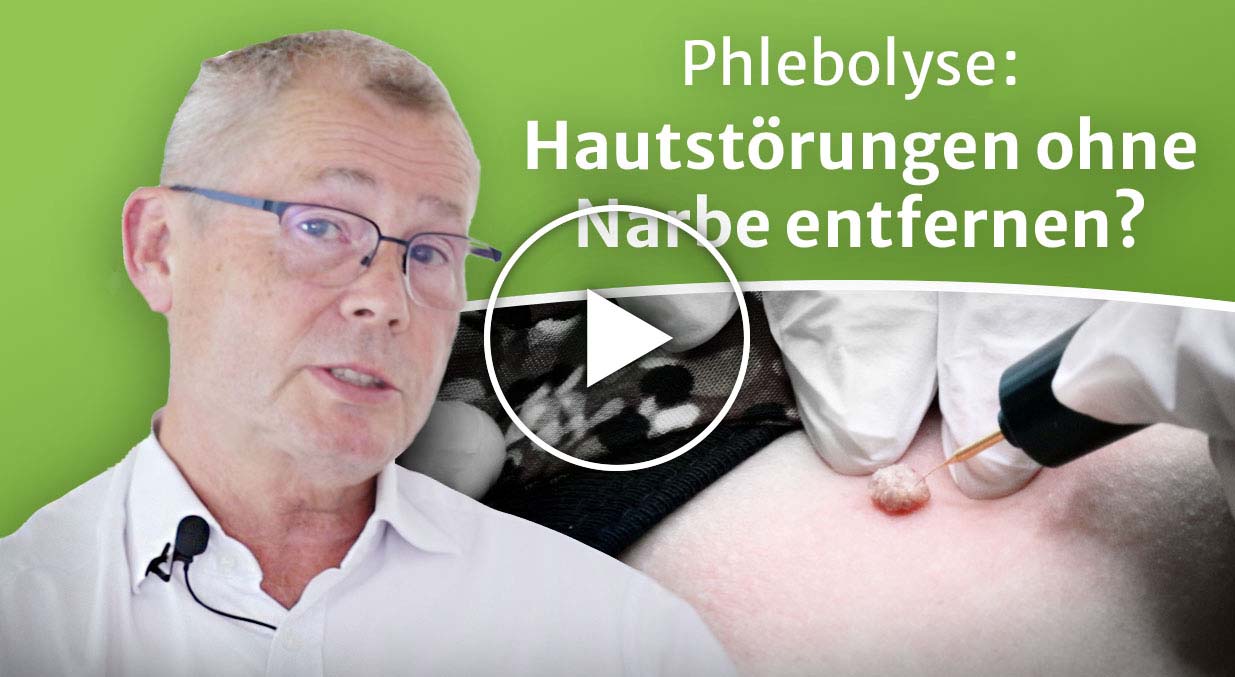How does phlebolysis work?
phleb from Greek "blood vein" and -lyse from Greek "dissolve"
Phlebolysis is a medical procedure that stimulates water molecules to vibrate strongly and thus generates heat - which, with sufficient intensity, leads to the destruction of the cells “from the inside”.
Tissues that are particularly hydrated, especially the blood vessels, react most strongly to this stimulus.
The vibrations are created by a combination of high-frequency radio waves and electrical current. This combination allows tissue to be destroyed even though the actual tool, i.e. the needle, remains cold.
Schematic representation of phlebolysis:
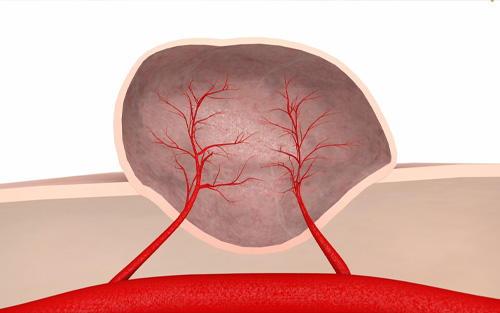
Most skin disorders are maintained by the body itself with fine blood vessels.
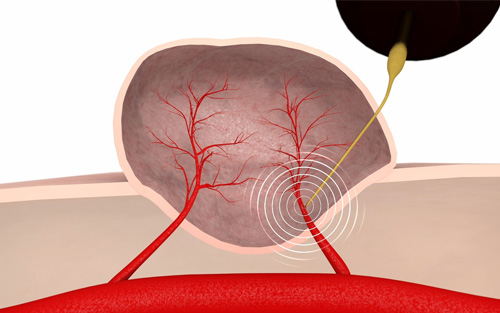
The combination of electrolysis and high frequency via a cold needle destroys the fine blood vessels of the skin disorder.
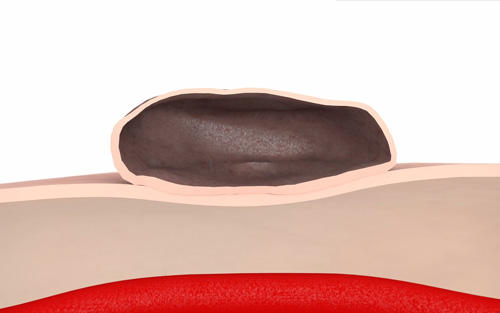
After the blood supply is cut off, the affected tissue denatures and dies. Since this process occurs very slowly, healthy, normal skin can grow back under the skin disorder.
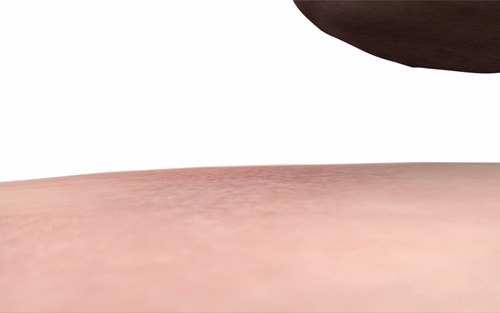
As a rule, the skin disorder simply disappears after a few days to weeks without causing any further complications.
How does the body react to the stimulus?
Due to the sclerotherapy of the cells and especially the blood vessels, the affected area dies - even if living cells were still present in the skin disorder, their nutrient supply was interrupted by the particularly effective sclerosing of the blood vessels.
The immune system recognizes the damaged tissue, but since it is very difficult to penetrate the dead tissue due to the lack of blood supply, it is not rebuilt.
Instead, the body repairs the tissue adjacent to the treated area, preparing for the rejection process.
This rejection process becomes visible to us through flaking of the skin or through the skin disorder simply falling off – either immediately after the treatment or over the course of the next few days, depending on the specifications of the skin disorder. Relatively large skin disorders sometimes require several sessions.
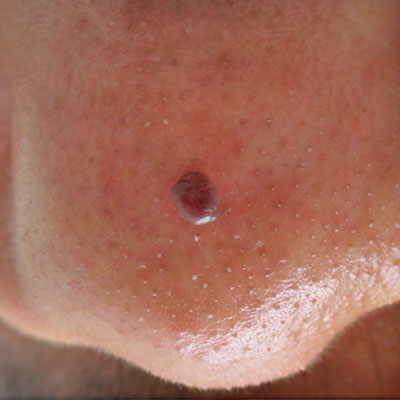
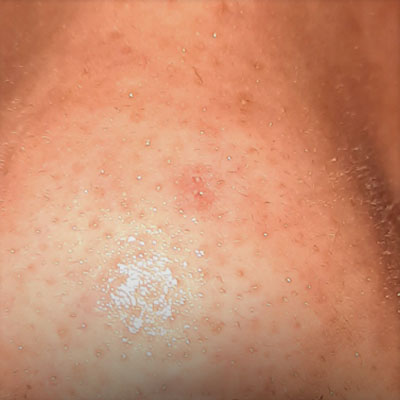
Images from ongoing user study. Single case report of a patient with fibromatous growth on the tip of the nose.
Picture 1 from July 14.07.2020th, XNUMX, Picture 2 from July 28.07.2020, XNUMX.
No conclusions can be drawn about the success of other treatments from this individual treatment case.
Side effects and contraindications?
After the treatment, slight redness may appear on the treated area. Although the treatment can be carried out without anesthetic, it is definitely noticeable and some patients find it uncomfortable but still bearable. Among the approximately 1.000.000 documented cases, no lasting side effects or deterioration of the skin's appearance have been reported to us so far.
Before treatment, it should always be clarified by a doctor whether the skin disorders may need to be treated surgically for safety reasons (e.g. if cancer is suspected).
The advantages of treatment with phlebolysis:
- no anesthesia
- Scar formation not known
- gentle and painless method
- immediately visible reaction
- applicable to any skin
- Burns impossible because the tool is cold
- no bleeding
- no risk of infection
- no threads, no pressure bandage
- Patient is in no way restricted after treatment
Interview with Andreas Oehme, co-developer of phlebolysis.

